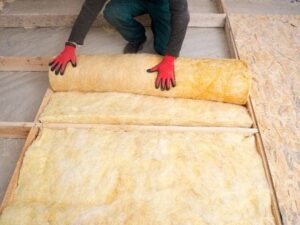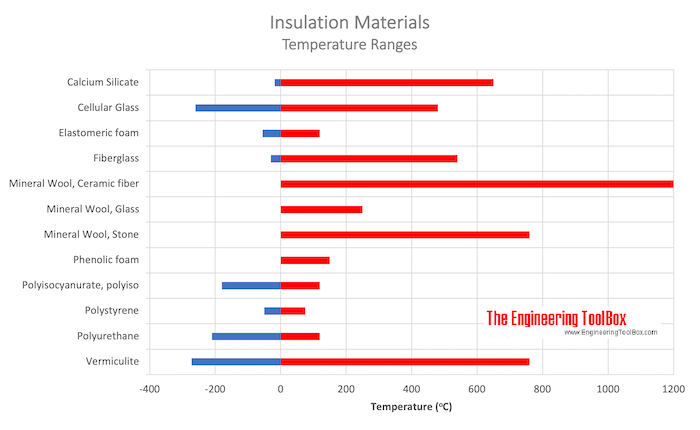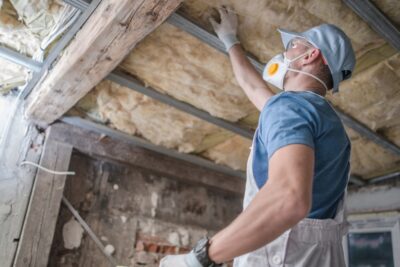Safety is one of the most important parts of building or renovating a building. Your building insulation is the most important part of your home. However, is insulation flammable? We will find out more on this page.
Yes, insulation is flammable, but those that are made from fiberglass and mineral wool are not flammable. Insulation that is made from cellulose and foam can be a fire hazard if it contains cotton or wool fibers. These types of insulation should never be used in high-heat applications.
If you’re a homeowner, you may want to consider fire-resistant insulation, and the best are fiberglass and mineral wool insulations. With the two, you can be confident that your insulation will not catch on fire.
What is insulation?

Insulation is a material used to keep heat or cold from passing through a building. Insulation can be applied to walls, floors, and ceilings. It’s typically made from materials like fiberglass, polystyrene, or spray-on foam.
It is often used in the winter because it keeps heat in during the day and prevents it from escaping at night. Also, it helps prevent condensation on cold surfaces like windows and roofs.
Insulation is important in any building, but it’s even more critical in the winter. In colder climates, insulation helps keep you warm while still allowing the sun to shine through your windows.
It helps prevents heat loss. When you’re insulated, it takes longer for your house to lose heat during the winter months. This also means that your furnace won’t have to work as hard to keep you warm.
Also, there are different materials that have been used for insulation. While some can catch fire under exposure to serious heat, some are resistant to fire.
Flammable insulation materials
Flammable insulation materials are a type of insulation that can ignite when exposed to high temperatures. This can be dangerous because it can lead to a fire and even death. There are several materials used for this purpose, including:
Foam (i.e., polyurethane foam)
Foam insulation is a great way to reduce your energy bill and make your home more comfortable. But did you know that there are other benefits as well?
Also, foam insulation has a high R-value and can be installed in homes and businesses alike, making it an affordable and effective choice for most homeowners.
The drawback to using foam insulation is that it can compromise when exposed to too much heat, which means it can catch fire.
Cellulose insulation
Cellulose insulation is the most common type of insulation used in homes. It’s a fluffy, white material that is made from wood pulp and other plant fibers.
Also, cellulose insulation comes in many forms, including loose fill, blown-in, and sprayed-on. It can be used in crawl spaces, attics, and basements.
The drawback of cellulose insulation is its flammability. If you or your family members burn it while it’s around you, there’s a chance that the fire could spread to your home or other buildings in your neighborhood.
If you want to use this type of insulation in a home or other building, it’s important to follow safety precautions when installing it so as not to cause any damage or harm to anyone who lives there.
Read:: Is Shaving Cream Flammable?
Non-flammable insulation materials
Non-flammable insulation materials are the most important factor in preventing a fire from spreading throughout your house. These materials are designed to be fireproof, but they aren’t designed to catch on fire themselves.
The most common non-flammable insulations include:
Mineral wool
Mineral wool is an insulation material made out of mineral fibers, which are used to insulate buildings. The mineral wool is made from rock, soil, or other natural materials that have been processed into a mesh-like structure.
Also, mineral wool is typically used in residential construction because it’s cost-effective and durable. It’s also fire-resistant and rot-resistant, so you don’t have to worry about its safety when you install it in your home.
Fiberglass insulation
Fiberglass insulation is one of the most common non-flammable insulations used in homes. Unlike other types of insulation, fiberglass insulation does not burn or catch fire when exposed to flames.
This makes it ideal for use in places where you would usually find combustible materials such as wood and paper.
Read: How To Safely Burn Trash
Is fiberglass insulation flammable?

Fiberglass insulation is not flammable because it’s made of glass fibers. Fiberglass insulation is a great way to insulate your home in winter.
It’s also a good way to save some money on energy bills, But one thing you should know is that fiberglass insulation isn’t flammable because it’s made of glass fibers.
Insulation fire rating chart

(Source)
Can insulation catch on fire?
Yes, insulation can catch on fire. It’s a common misconception that insulation is completely impervious to fire, but that’s not the case at all.
Insulation is meant to protect against heat and flame, but it cannot stop flames from spreading if there is an underlying cause for the fire to start in the first place (like a faulty wiring system or a flammable object nearby).
Can insulation in the attic catch fire?
Yes, insulation in the attic can catch fire. Insulation is the material that is used to keep the heat from escaping from a building. It’s often made from fiberglass, cellulose, or other materials that are resistant to fire.
The problem is that when the insulation catches fire, it will cause a lot of damage to your property and make it difficult for you to escape.
Even though insulation in the attic is meant to protect against heat loss, there are instances when it can catch fire due to unforeseen circumstances like faulty wiring or improper installation.
In such cases, it’s important that you contact an expert who can inspect your home and identify any issues before they spread further into your home.
Recommended: Is Hairspray Flammable?
Is R 11 insulation flammable?
R-11 insulation is flammable and can be ignited, but it’s not as likely to burn as the insulation you’ll find in a home.
It is made from cellulose acetate, which is a flammable material that’s used in many consumer products to insulate them. However, since it doesn’t have any other components besides cellulose acetate, it can’t be ignited like other types of insulation.
In addition to being flammable, R-11 insulation can also cause harmful fumes if it comes into contact with an open flame or spark source. If this happens, wear protective clothing and call 911 immediately.
Read:: Best Way To Stack Firewood
Is fiberglass insulation safe?
Yes, fiberglass insulation is safe. Fiberglass is a durable and versatile insulation material that can be used in a variety of residential and commercial building applications.
Because the material is fire-resistant, it’s an excellent choice for use in any place where you need to protect yourself or your possessions from fire.
In addition to its durability, fiberglass has some other benefits that make it one of the best insulations available today.
For example, because it’s so lightweight, fiberglass insulation doesn’t require much energy to install compared to other insulation materials like cellulose or rock wool. This makes it an eco-friendly product as well.
Finally, fiberglass is highly resistant to moisture damage which means that it won’t rot or decay over time like other types of insulation might do. So if you’re looking for an effective way to keep out moisture while also keeping your home comfortable year-round, fiberglass insulation should be your first choice.
Conclusion
There has been lots of information, and misconception on the topic of is insulation flammable. While some claim that it is flammable, some choose the option that it is not. The truth is that if you say yes it is or no it isn’t, you are not wrong with your choice.
Apparently, insulation is of different types, and they vary based on the materials that have been used in their production. So, there you have flammable insulation and non-flammable insulation. Here above, you get to learn more about the two.


